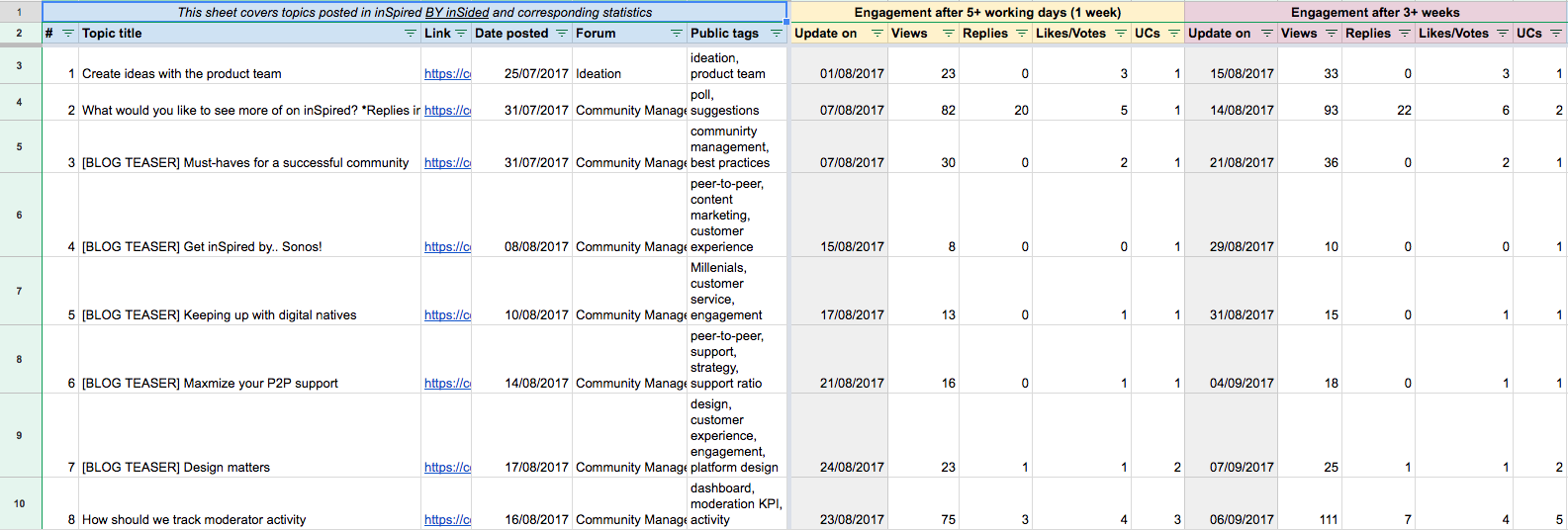Whenever you are working with a content strategy, it should also be relevant to your users. Otherwise, why should you want to invest so much time in creating content, if no one really finds it valuable?
But how do you know if your users are excited about your content? Especially if your community is new, this can be a challenge. This article will give you some tips that will help you generate focus and direction when creating content.
What’s the goal of your community?
To get a base direction of the content that you want to create, you should think about the goals of your community. It will not just tell you what (not) to include in your content strategy, but also it could become important in a later step: Maybe you find that what you want to achieve in the community is something different than what (some) of your users want to achieve.
See what sticks
By recording the performance (views, likes, helpfulness votes, comments) of your content, you will see what your users find interesting. I recommend adding a performance section to your content calendar, which covers the impact of your content e.g. 7 days after being published. Below an example of such an overview:

Tip: Don’t feel disheartened when content that you have created does not receive many comments or likes. Rather see your content as test balloons which will help you understand your users needs better.
Should you want to learn more about this, I can recommend reading more about the Content Performance Framework (CPF) in this article:
Follow your users passion
Ideally, your content strategy is oriented on existing user behaviour in creating content: When users are feeling motivated to comment / start new discussions around the same topic all the time, then this is a good indicator that your content be more likely to stimulate users to react.
Often enough, these are touchy subjects that your company does not have a lot of information on. It could be a sensitive product limitation, a policy or common challenge that your users struggle with to overcome. It is recommended to rather address these kind of topics (if possible) and reflect that in your content calendar, even if you don’t have all the answers / a one-fits-all solution for them. If anything, your users will appreciate that you are speaking about a topic rather than (seemingly) ignoring it.
Survey your users
I often have seen communities perform surveys amongst their user base, to gauge if the community content is meeting their expectations. Ideally this survey is open to all users (also visitors) and includes multiple-choice answers (as open text fields are very hard to analyze at scale). Be aware that we offer Typeform embeds in posts, but you could also offer them as pop-up surveys. The advantage of the latter is that you don’t have to rely on users actively going to a specific article.
Such a survey could be combined with other questions around your community (e.g. to measure the value the community delivers), and even come with an incentive. This survey from the Docebo Community is a good example of that.
Interviews
Don’t forget that you can also directly speak to your users. Some communities sample various new and experienced users, to invite them to a 15-30 minute interview about their community experience. Next to general feedback, their expectations and wishes towards content can be part of such an interview.
Super User suggestions
Do you have a group of highliy active users? Great! Do you have a group of a category on the community where you engage with them? Even better. Your Super Users usually will be able to tell you about content needs, as they usually have a good feeling of what the community is currently not covering. So why not open a topic in your secret Super User Hideout and actively invite them to suggest content in there?
Hopefully this will help you on your way. In case you have any questions, or should you have any cool examples / other ways how you are creating better content by understanding your users needs, then feel free to share it with us in the comments!
This article is our second edition of our series around content strategies. Feel free to check out the first article of this series here.